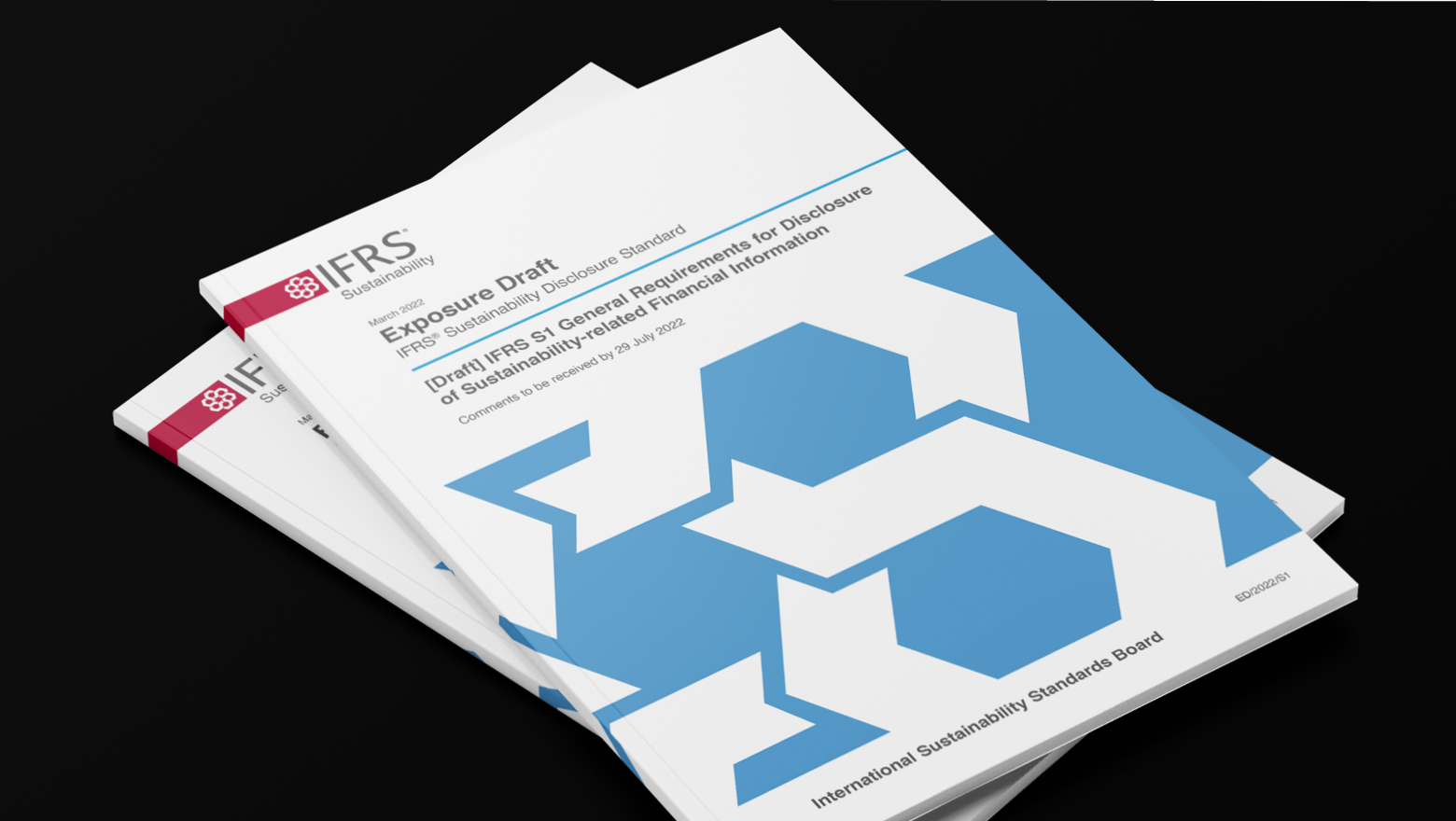
Stay informed with regulations, insights & events by joining our mailer
Despite increased expectations for companies to disclose their ESG data, there is still growing confusion surrounding sustainability reporting.
As a solution to this, the International Sustainability Standards Board (ISSB) was established at COP26.
It was tasked with the development of a global baseline of sustainability disclosures to meet investors’ information needs. In this blog, we provide an outline of these proposed sustainability reporting standards.
An introduction to the exposure drafts
The ISSB worked collaboratively with other boards and working groups to create a common set of reporting requirements. This includes a memorandum of understanding with the Global Reporting Initiative (GRI) to align and coordinate its activities, ensuring that both investor and broader stakeholder information needs are met.
Building on the recommendations of the TCFD and incorporating industry-based disclosure requirements from SASB Standards, the ISSB has created two exposure drafts: the general sustainability-related financial disclosures and the climate-related disclosures.
The aim of these proposals is to assist investors in assessing an entity’s enterprise value by disclosing a company’s significant sustainability-related risks and opportunities, as well as the company’s response to and strategy for managing them.
These proposals have not been finalised as the ISSB would like to consider and incorporate commentary and suggestions from the public. The deadline to submit thoughts and opinions is 29 July 2022.
Design Portfolio is hosting a live webinar with the ISSB on Tuesday 28 June. This will help provide further clarity on the exposure drafts and allow you to ask any questions or raise any concerns directly with the ISSB team. More on this at the bottom of this blog.
The role of the standards and materiality
The proposed standards are intended to supplement and complement the information contained in the entity’s financial statements, providing investors a complete insight into the entity’s value. Consequently, the ISSB has emphasised the importance of consistency between financial statements and sustainability reporting by requiring companies to explain linkages in information and essentially consider the two as a package. This is especially important as the ISSB proposes that financial statements and sustainability disclosures should be published at the same time.
The type of sustainability-related information is dependent on the entity’s business model, resources, and business relationships. The ISSB used the example of water dependency to illustrate this. In this example, if an entity’s operations were dependent on water, the potential scarcity of water supply would be a material sustainability risk for the entity’s operations, thereby impacting the enterprise value of the organisation. This leads us onto the general requirements for disclosure.
General requirements for disclosure of sustainability-related financial information
The General Requirements Exposure Draft calls for entities to disclose information on all significant sustainability-related financial risks and opportunities. The General Draft is based on the IFRS Accounting Standards (IAS 1 and IAS 8) and the core content is consistent with the regulations set by the TCFD. For each material issue, the exposure addresses the entity’s governance, strategy, risk management, and metrics and targets concerning the sustainability-related risks and opportunities.
The ISSB has, however, made additions to the guidance set by the TCFD. For example, the ISSB has extended the TCFD’s recommendation to describe the identification and assessment process of sustainability-related risks to also require the disclosure of the input parameters used to identify risks, as well as state whether the process has changed in comparison to the previous reporting period.
Climate-related disclosure
If climate is a material risk to an entity, it must use the climate-related disclosure in addition to the general disclosure. The climate-related disclosure requires information about physical risks (e.g. floods), transition risk (e.g. regulatory changes) and climate-related opportunities (e.g. new technology).
Some of the sections in the climate-related disclosure include:
- transition planning: a section specifically on emissions targets in which a company explains its strategy to achieve its emission targets, notably its carbon offsets;
- climate resilience: the resilience of a company’s business strategy and business model in multiple scenarios; and
- Scope 1-3 emissions: a requirement for all companies, regardless of business model, to disclose GHG emissions in accordance with the GHG protocol.
The ISSB plans to create more specific disclosures for sustainability material issues in the future.
Join our event for more information and insight
Although these standards are not mandatory practice, there is an increasing pressure and expectation from investors and wider stakeholders for companies to disclose sustainability-related information. What’s more, there is a possibility that national governments will introduce legislation that incorporates the ISSB Standards. This is something that the UK Government has indicated it is considering in its upcoming Sustainability Disclosure Regulation.
Design Portfolio is hosting a live webinar with the ISSB on Tuesday 28 June 2022. We are pleased to be joined by ISSB Technical Staff, Sundip Jadeja, who has been closely involved in the drafting of the General Requirements Exposure Draft and Caroline Clark-Maxwell, who has been closely involved in the drafting of the Climate Exposure Draft. The webinar will provide a platform to further discuss the proposed disclosures and field questions about the Exposure Drafts.
To join the webinar, please get in touch with martha.mcpherson@design-portfolio.co.uk